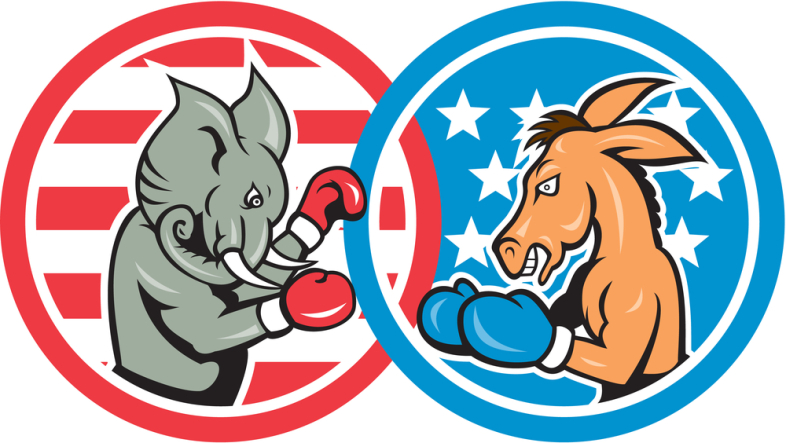A Case Against the American Two-Party System
March 2, 2018
America’s two-party system was established in 1790 with the Federalist party and the Democratic-Republican party. It was developed as a means of designing two centralized parties that would create a political medium for voters, and it would reduce the influence of radical beliefs. This design would also reduce the clutter and disarray of a multi-party system, where voters may find it difficult to keep track of their representatives. Since then, the country has witnessed the domination of two other parties that are ubiquitously known today: the Democratic and Republican parties.
It does not take much political knowledge or study to find major problems with the two-party system. The most obvious being its tendency to create immense tension between the two parties that tends to be cyclical and relentless in nature. Of course, the tension between the two parties is only natural, but there seems to be an underlying animosity that cannot be mitigated with healthy and meaningful discourse and discussion. If decisions and policies need to be passed, it cannot be done in this fashion, as the two parties can scarcely ever come to an agreement.
Take for example the government shutdown in late January, where a policy regarding DACA failed to pass; the bill was unsuccessful, as 45 Senate Democrats and five Senate Republicans voted against it. While there have been only eighteen government shutdowns during US history, these only represent physical repercussions of Congress and the Executive branch not coming to an agreement, when countless disputes and contentions occur on a daily basis. This, in conglomeration with the media’s input, breeds a hostile environment, where crucial decisions cannot be made. As American satirist and journalist H.L. Mencken put it, “Under democracy one party always devotes its chief energies to trying to prove that the other party is unfit to rule — and both commonly succeed, and are right.”
Furthermore, the use of a two-party system skews a politician’s true beliefs and washes out minority parties that may have a great, necessary impact on the country. Before progressing, it is imperative to understand that the political stances of parties can be fluid and can shift over time, in what is called as a “realignment.” This explains how parties have emerged and disappeared, as the needs of the people have evolved. However, once realignment has taken place, it can take a considerable amount of time before changes can be made.
Therefore, politicians who run for one of the respective parties may and almost certainly will alter their political beliefs in order to win and earn the majority vote of the people. There is a glaring issue in this scenario, as politicians who may want to express change for the country will either have to face losing the election, for their ideas may be radical to the consensus, or they must change their political ideals to have a chance of winning. Politicians who choose the former option may start a new party, but they will almost always certainly lose out to the main two political parties, as seen with the Green Party and the Libertarian Party in the last presidential election. Even though these parties were available to the citizens, the mindset has always been to vote either Democrat or Republican, and that mindset will continue to persist, as long as the two-party system exists.
Alas, the two-party system will undeniably last for generations to come, and although the problems with it have been clearly presented, it is difficult to deny that over the past 240 years, the system has produced minds that have revolutionized the country. Whether the two-party system was directly responsible for that, is debatable, but the complete eradication of the system would obviously face backlash. However, the system’s disintegration may be for the country’s good, as it would ensure a more democratic and representative approach to the election process.
